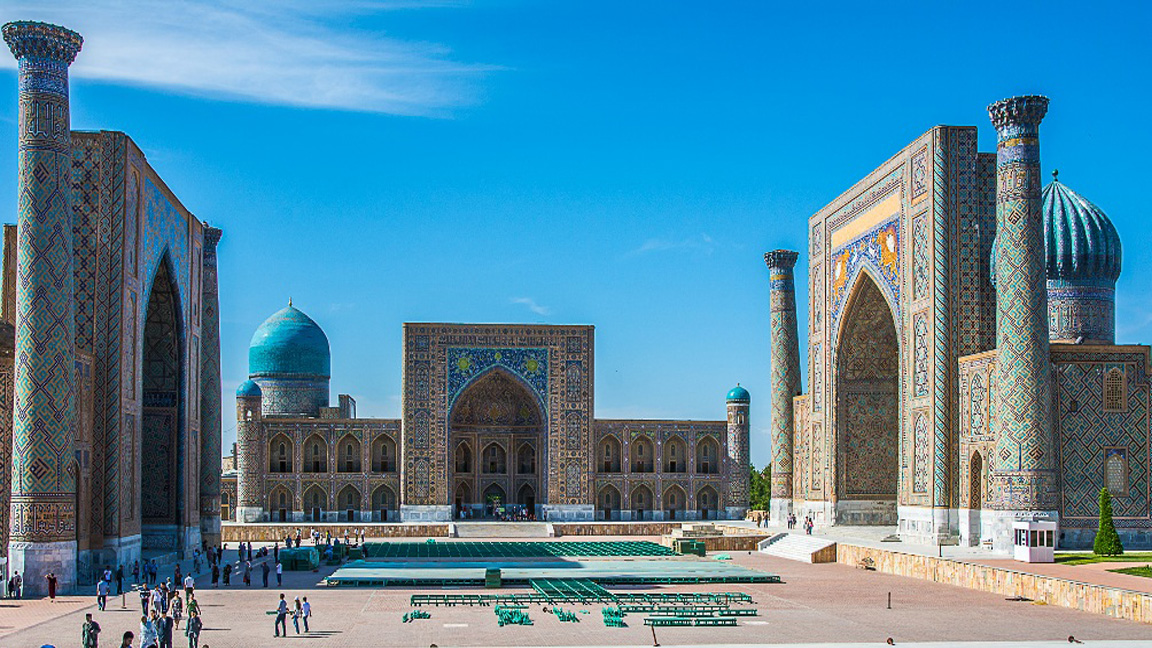


Samarkand - pearl of the east
Samarkand is one of the oldest cities in the world; a contemporary of Rome, Athens and Babylon. The important trading city of the Silk Road Samarkand was already known to the ancient Greeks as "Mara-canda". The first settlements were founded over 5,000 years ago, the heyday of Samarkand began under Amir Timur (Tamerlan), who transformed the city into one of the largest capitals and cultural centers in Central Asia in the 14th century Has. He decorated the city with spectacular mosques and madrasahs. Timur's grandson Ulugbek, who ruled Samarkand until 1449, made the city the center of medieval science.
The boundless gardens can be seen at the entrance to the city. The history of their creation was an important aspect in the past. Amir Timur ordered a green belt around them Capital of his empire. The gardens with plantations of fruit and ornamental trees, flower gardens, irrigation system and water basins were great. "A traveler approaching the city sees only a mountainous height, the trees and the houses below them remain invisible," wrote the Spanish envoy Ruy Gonzáles de Clavijo, who visited Samarkand in 1404.
The historical city of Samarkand represents the most important phases of Central Asian cultural and political history from the 13th century in its art, architecture and urban structure
to the present day. The ensembles such as the Bibi Khanum Mosque and the Registan Square played a fundamental role in the development of Islamic architecture across the entire area, from the Mediterranean to the Indian subcontinent. Throughout its centuries-old history, the ancient city has seen periods of rise and fall, suffered the devastating raids of foreign invaders, but the city has always been revitalized and becoming more beautiful.
Today, in terms of population and territory, the city is the second largest city in the country and the administrative, economic and cultural center of Samarkand Province. The city is located in the south-western part of Uzbekistan, almost in the center of the country, at the entrance of the picturesque Zarafschon Valley, between the Dargom and Siob canals. It is located at an average height of 725 meters above sea level. The city is surrounded by the Zarafschon Valley, north by the Nurota mountain ranges, in the east by the Turkestan mountain ranges and in the south by the Zarafschaen mountain ranges.